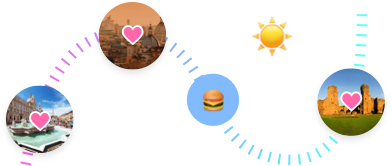



Galleria Alberto Sordi, until 2003 Galleria Colonna, is a shopping arcade in Rome named after the actor Alberto Sordi. It was designed in the early 1900s by the architect Dario Carbone and constructed on the Via del Corso as Galleria Colonna (named after the homonymous square which stands across the Via del Corso). It was built on the site of Palazzo Piombino and inaugurated in 1922. The building is in the Art Nouveau style. In 2003, following an accurate restoration, the then major Walter Veltroni decided to rename the Galleria after the popular Roman actor Alberto Sordi, deceased that year, as Sordi had started his career in a theatre, Teatro Galleria, which was part of the building. The restored gallery was re-inaugurated with its new name on October 30, 2003.
The Galleria Commerciale Porta di Roma offers, in addition to 220 shops in which to find the best brands of clothing and accessories, also a rich offer of events and shows. Porta di Roma is fun and shopping in the company for the whole family, comfortable and relaxing. It is located in the Bufalotta area in the northern part of the city.
Via Frattina is one of the most famous streets of the historic center of Rome. A destination frequented mainly by tourists, Via Frattina offers showcases dedicated to high fashion, to be explored or just to admire, but also furnishing and silver shops, exclusive restaurants and the famous Bar Roma, historic meeting place in the 50s for actors and directors and today a compulsory refreshment point between shopping.
Via Condotti (officially Via dei Condotti) is a busy and fashionable street of Rome, Italy. In Roman times it was one of the streets that crossed the ancient Via Flaminia and enabled people who transversed the Tiber to reach the Pincio hill. It begins at the foot of the Spanish steps and is named after conduits or channels which carried water to the Baths of Agrippa. Today, it is the street which contains the greatest number of Rome-based Italian fashion retailers, equivalent to Milan's Via Montenapoleone, Paris' Rue du Faubourg-Saint-Honoré, Florence's Via de' Tornabuoni or London's Bond Street. Caffé Greco (or Antico Caffé Greco), perhaps the most famous café in Rome was established at Via dei Condotti 86 in 1760, and attracted figures such as Stendhal, Goethe, Byron, Liszt and Keats to have coffee there. Guglielmo Marconi, inventor of radio, lived at Via dei Condotti 11, until his death in 1937. Being near the Spanish steps, the street is visited by large numbers of tourists. In May 1986, fashion designer Valentino filed suit to close a McDonald's shortly after it opened near the Spanish steps, complaining of "noise and disgusting odours" below his six-story palazzo in the vicinity of Via Condotti. But to the dismay of some Romans, McDonald's overcame the obstacles and is successful.Via Condotti is a center of fashion shopping in Rome. Dior, Gucci, Valentino, Hermès, Armani, Jimmy Choo, La Perla, Prada, Salvatore Ferragamo, Furla, Burberry, Céline, Dolce & Gabbana, Max Mara, Alberta Ferretti, Trussardi, Buccellati, Bulgari, Damiani, Tod's, Zegna, Cartier, Bally, Montblanc, Tiffany & Co., Louis Vuitton have stores on Via Condotti. Others, such as Laura Biagiotti, have their offices there.
The Via del Corso (ancient Via Lata, the urban stretch of Via Flaminia), is a main street in the historical centre of Rome. It is remarkable for being absolutely straight in an area characterized by narrow meandering alleys and small piazzas. Considered a wide street in ancient times, today the Corso is approximately 10 metres wide, and it only has room for two lanes of traffic and two narrow sidewalks. The northern portion of the street is a pedestrian area. The length of the street is roughly 1.5 kilometres. The Corso runs in a generally north-south direction. To the north, it links the northern entrance gate to the city, the Porta del Popolo and its piazza, the Piazza del Popolo, to the heart of the city at the Piazza Venezia, at the base of the Capitoline Hill. At the Piazza del Popolo, Via del Corso is framed by two Baroque churches, Santa Maria dei Miracoli and Santa Maria in Montesanto, and along the street are the church of San Carlo al Corso, the church of San Giacomo in Augusta, the church of Gesù e Maria, the Piazza Colonna with the ancient column of Marcus Aurelius, the Galleria Alberto Sordi, the church of Santa Maria in Via Lata, the Oratory of Santissimo Crocifisso, the church of San Marcello al Corso and the Palazzo Doria Pamphili. From the fifteenth century, the road served as the racetrack during the Roman Carnival for an annual running of riderless horses called the "corsa dei barberi", which is the source for the name Via del Corso. Today, the Corso is a popular place for the passeggiata, the evening stroll for the populace to be seen and to see others. It is also an important shopping street for tourists and locals alike.